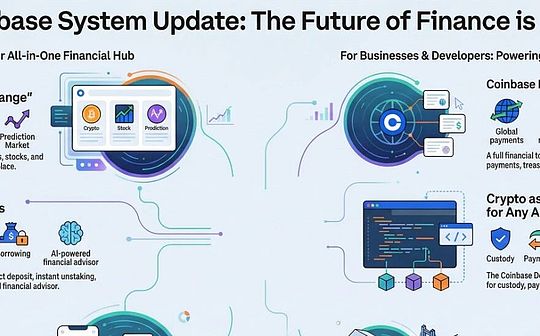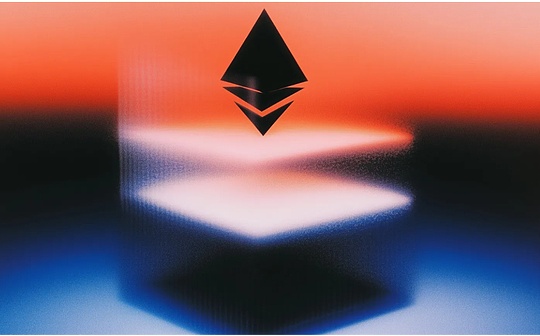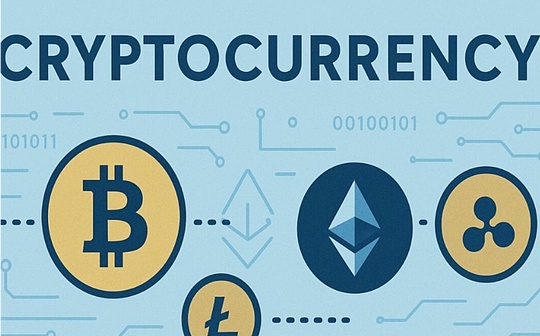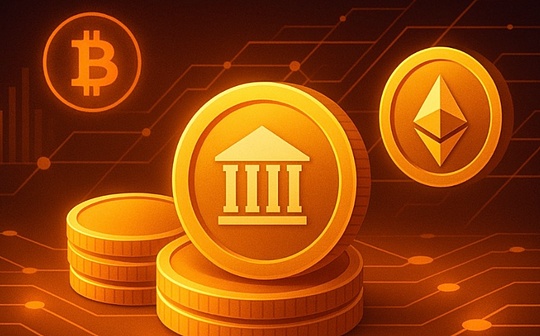
Author: PEDRO Source: Modular Media Translation: Shan Ouba, Bitchain Vision
Celestia’s first major upgrade: LEMONGRASS.
Lemongrass introduced a number of key improvements and functions, which aims to improve the function, security and overall user experience of the data availability layer (DA layer).This article will in -depth analysis of each new function and explain related Celestia improvement proposals (CIPS) and its importance.
LEMONGRASS upgrade overview
As mentioned above, Lemongrass marks the first major upgrade of Celestia. It is planned to be deployed on the Arabica testing network this month, then deployed on the MOCHA testing network, and finally deployed on Celestia Mainnet Beta in early September to mid -September.
LEMONGRASS contains a total of 5 CIP:
-
CIP-6: Price Law Enforcement
-
CIP-9: Packal forwarding middleware
-
CIP-10: Coordinated upgrade
-
CIP-14: Chain Account (ICA)
-
CIP-20: Disable blobstream module
Now, let us break down these contents and explain its importance:
CIP-6: Price Law Enforcement
The CIP-6 introduces the minimum price execution mechanism to establish a global minimum GAS price for all transactions on Celestia.This means that the community determines the minimum UTIA number required for each transaction (pledge value: 1 TIA = 1,000,000).
Don’t worry, through chain abstraction (more specifically, GAS abstraction), the end user does not need to worry about any GAS payment (*knocking the wood) in the future.
The advantage of CIP-6
-
Transaction priority:GAS costs act as bidding mechanisms.When network congestion, the transaction processing speed of users who are willing to pay higher costs will be faster, so as to ensure that when demand is strong, users think that high -value trading will be included in the block.
-
Spam prevention:By charging the minimum fee for each transaction, the chain prevents users from sending a large amount of low -value transactions to the network.Because each transaction generates costs, attackers must spend a lot of resources to send a large number of transactions to the network, which makes DDOS attacks more expensive and feasible.In short, the number of transactions you can send on the Internet before paying funds to pay GAS fees is limited.
-
Stable and predictable pricing:Summary itself can better predict trading costs, so as to achieve more reliable financial planning.
-
Prevent cost manipulation:Because the minimum cost of the world is formulated through community governance, verifiedrs cannot press the price or conduct chain transactions to ensure fairness.
Overall, CIP-6 ensures that summary and end users can benefit from the stable, secure and predictable pricing of the Celestia network.
CIP-9: Packal forwarding middleware
The CIP-9 introduces the data packet forwarding middleware (PFM), which enhances Celestia’s existing cross-blockchain communication (IBC) protocol. In other words, the method of improved Celestia and other IBC chain letters and sharing information.For those who do not know, IBC is a protocol for unbalanced communication between chains. It is used in the entire COSMOS ecosystem, but now enters Ethereum and other chains through teams such as Union and Polymer.
The role of CIP-9 is to enhance Celestia’s existing IBC function by forwarding the middleware (PFM) of integrated packets.The middleware adds advanced routing and processing functions, which can improve the efficiency, reliability and user experience of cross -chain transactions.At the same time, the tokens can be exchanged to ensure that the tokens maintain their attributes on multiple chains.
Before PFM, Celestia supports the basic tokens transfer between the internal chain of the IBC ecosystem.After the upgrade, Celestia will support high levelJumpFunction, allows tokens to seamlessly use multiple chains to routing.
Suppose user ALICE wants to replace ETH on the chain A with TIA on chain B..Without PFM, she needs to handle each step manually, which is time -consuming and complicated.With PFM, she can start the exchange. PFM processs the entire process to route to the token to any necessary chain.At the same time, tokens can be maintained.
Let’s see a sample scene:
-
Alice wants to exchange tokens on chain A with to tokens Y (TIA) on chain B.She uses DEX to support tokens X (ETH) and tokens Y (TIA), but needs to be switched through chain C (intermediate chain).
-
If there is no PFM:Exchange will require multiple manual steps, and Alice may need to handle each transfer separately.
-
Use PFM:Alice initiates the exchange on DEX. The token X (ETH) on the chain A and the tokens on the chain B are responsible for the routing.It sends the tokens X (ETH) on the chain A to the chain C, and forwards the tokens on the chain C X (ETH) to the chain B, and exchanges it to tokens Y (TIA).
-
From the perspective of Alice, she has experienced seamless token exchanges without having to worry about the underlying complexity of cross -chain transactions.She initiated exchanges and received tokens on Chain B.
In the end, the CIP-9 improved the efficiency of cross-chain transactions, enabling developers to build a more advanced and more efficient cross-chain DAPP. At the same time, the end users enjoy a smoother and seamless cross-chain experience.
CIP-10: Coordinated upgrade
This is easier to understand.The CIP-10 introduces a new method of coordinating CELESTIA network upgrade to ensure that different versions of network software can transition smoother.
First, introduce how to handle Celestia hard fork (upgrade).
In essence, you need the coordination between the Celestia Labs team and the Celestia verification.
After the LEMONGRASS upgrade, or any major upgrade in the future, the old Celestia network will no longer be compatible with the new network, which is why the verification device coordinates so important.
So how do Celestia verificationrs know when to upgrade, or when to upgrade?This is essentially the purpose of the CIP.
In the past, the upgrade was processed by setting up the specific block height of the upgrade -for example, “on the block #1,000,000, each verifier must upgrade its node to continue to form blocks for chain.”Verivers must manually update their nodes according to this block, if not coordinated properly, it may cause problems.
This is what we will see after we upgrade LeMongras.
After the LEMONGERASS upgrade, or the CIP-10 officially integrates to Celestia, the future upgrade will use the signal system on the chain, and the verified that the system can indicate that they are ready to be ready.Specifically, once 5/6 (about 83.33%) of the total voting right indicates that the new proposal version is ready, the network is considered to be ready to upgrade.
The network upgrade may be complicated and risky.This new upgrade agreement will ensure that there are sufficient number of verifications before the transition to the new version of the network, so as to maximize the risk of interruption and network interrupt.
CIP-14: Cross-chain account
CIP-14 introduces cross-chain accounts into Celestia so that one chain can control the account on another chain via IBC.This is one of the functions of many people in the community, because it plays an important role in TIA’s biggest use cases -liquid pledge.
The working principle of ICA:
Two main participants need to keep in mind:
-
Control chain:Create and manage the chain of the account on another chain.It sends a command to the main chain (for example, as CELESTIA as the control chain).
-
Main chain:The chain where the account is located is managed by the control chain to execute the command received from the control chain (such as Stride).
As the main chain, Celestia can use the “Allow List” to control what messages can Ica execute.Although ICA has extensive flexibility, their main purpose is liquidity pledge.
Liquid pledged provider (LSP) allows users to pledge its TIA tokens, while retaining liquidity by liquidity through the liquidity pledged derivatives (such as STRIDE).This has a dual advantage: users can continue to get TIA pledge rewards, and at the same time use basic value in other DEFI applications.However, it is accompanied by risks, such as increasing the agreement layer or relying on third -party trust in multiple signature settings.
LSP can accumulate a large number of pledges in the network.If these tokens are entrusted to a small number of verifications, they will lead to centralized network voting rights and decision -making power.Therefore, Celestia’s LSP must meet key principles such as decentralization, minimizing trust, and community governance.
Through the implementation of ICA, Celestia can support Stride and other protocols to provide decentralization and minimize liquidity pledges in accordance with community values.In fact, this means that users on Celestia can manage their pledge activities on Stride without dependence on centralized entities.For example, users can pledge TIA on Stride and receive STTIA (pledged TIA), and at the same time, they can still manage all related operations from their Celestia accounts (such as commission, reward collection and cancellation pledge).
Users can benefit from seamless experience across different chains.They can interact with multiple chains without manually managing the accounts on each chain.This makes the use of cross -chain applications easier and intuitive.
CIP-20: Disable blobstream module
Finally, Celestia’s Lemongras upgrade will implement the CIP-20, focusing on deleting the old Blobstream module from Celestia because it has been replaced by more advanced Blobstream X.
According to the official page of the CIP-20, this is part of the effort of continuously clear or unnecessary components in the system.Although this change will not directly affect the end user, this is an important step to optimize the entire system.Deleting outdated components help ensure the smooth and efficient operation of the network.
in conclusion
The Lemongrass upgrade is an important step for Celestia to move forward. It is not only reflected in technology enhancement, but also in terms of how to prepare for the future development of the Internet.Each CIP is strategically designed to deal with specific challenges and opportunities.
CIP-6It is a key measure to maintain pricing stability and fairness. As more and more summaries and applications begin to use CELESTIA, this is very important.CIP-9Enhanced cross -chain communication, with the growth of blockchain operating, this function will become increasingly important.CIP-10Make upgrading more efficient and lower risks, which is an indispensable evolution in the process of network expansion.CIP-14The breakthrough function of cross -chain accounts was introduced, which paved the way for more complex and decentralized applications.at last,CIP-20It is necessary internal management steps to ensure that the network is streamlined and optimized.







